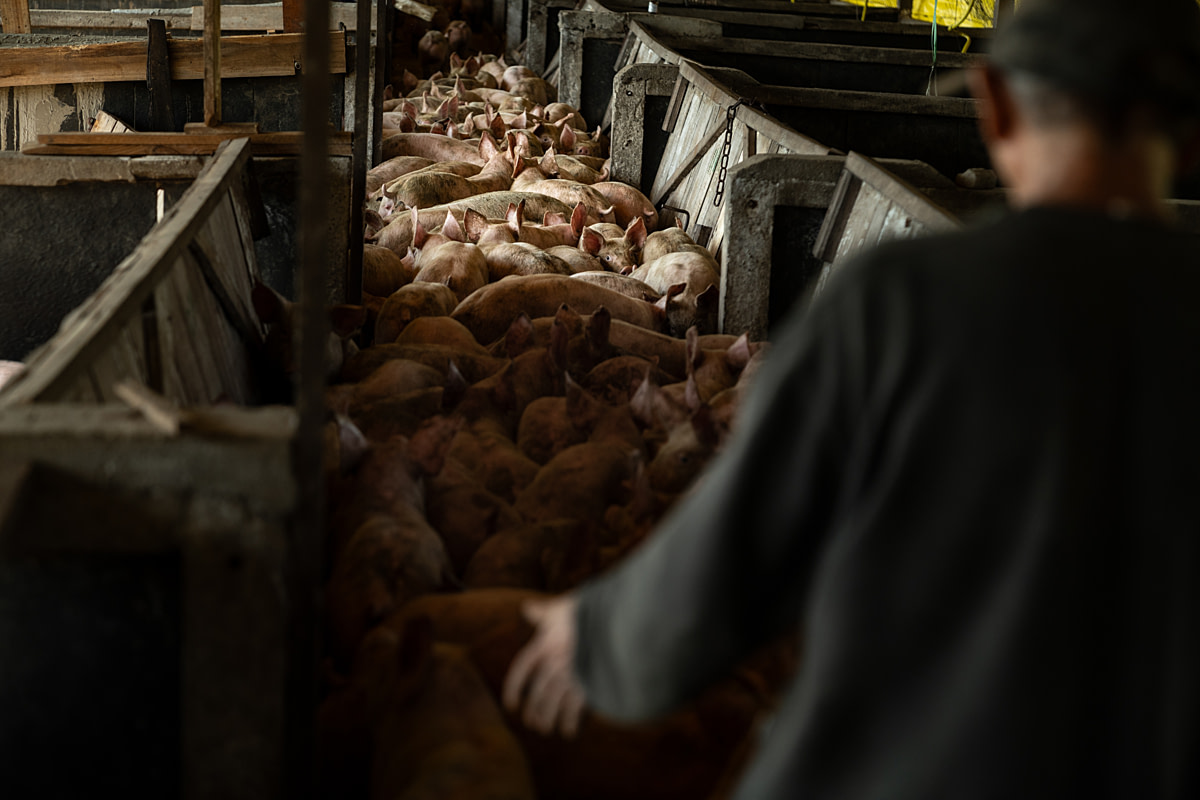Piglets newly delivered to a pig fattening farm fill a barn a corridor as a worker herds them into a series of pens. Undisclosed location, Santa Catarina, Brazil, 2024.
Vincenzo Ricci / World Animal Protection / We Animals
On assignment with World Animal Protection Brazil, in 2024, We Animals photojournalist Vincenzo Ricci documented the hidden side of Brazil’s livestock industry.
From ground-level images inside dim barns to vast aerial drone passes, Ricci’s visuals show what happens when a nation’s exports grow faster than its welfare oversight can keep up. Many of the farms he visited sit in a region known for intensive pig production, an area where major meat companies such as JBS, BRF, and Aurora Coop are reported to have a significant presence and influence.
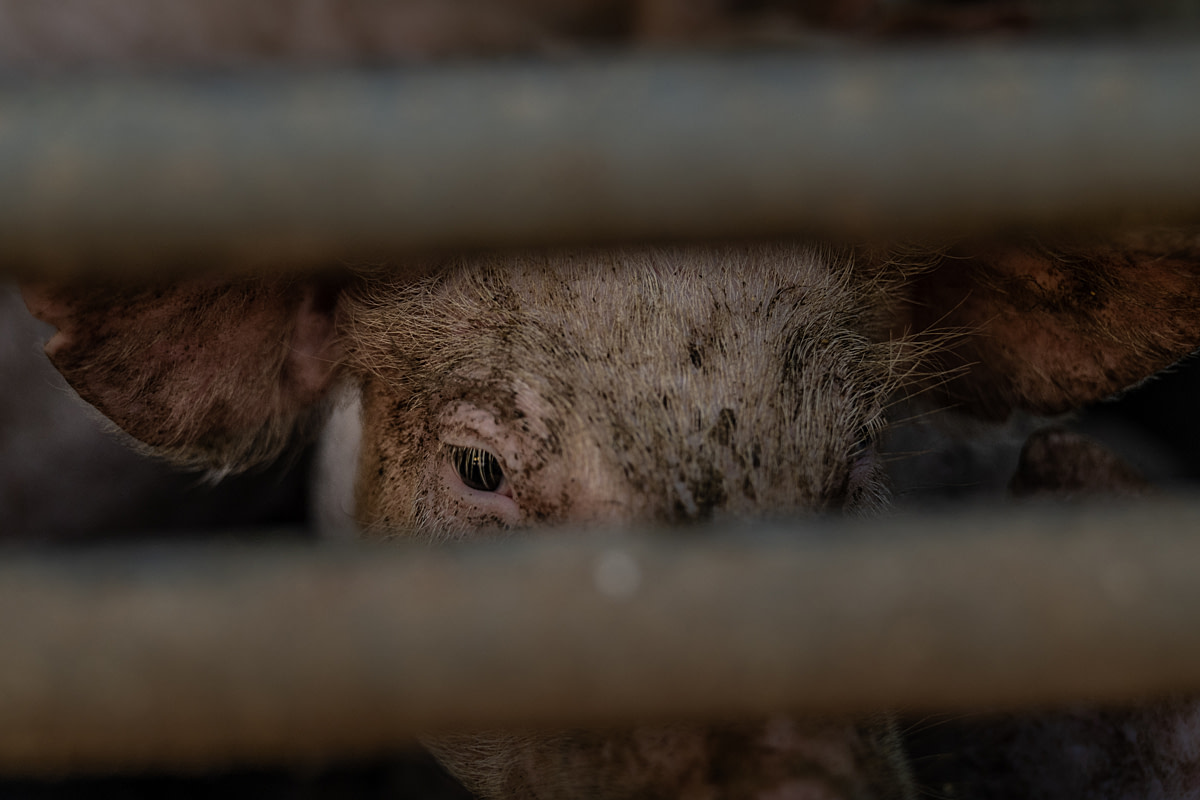
A piglet peers through the sides of a transport truck that has just arrived at a pig fattening farm. Undisclosed location, Santa Catarina, Brazil, 2024.
Vincenzo Ricci / World Animal Protection / We Animals

A piglet glances up while lying in a crowded concrete enclosure at a pig fattening farm. Undisclosed location, Santa Catarina, Brazil, 2024.
Vincenzo Ricci / World Animal Protection / We Animals
An Export Empire
Brazil is the world’s largest beef exporter and a rising force in pork production. In 2024 alone, the country shipped more than 1.8 million tonnes of beef to over 150 markets worldwide. Pig production and exports are also hitting new highs, with demand from Asia and Europe driving expansion. Brazil exports approximately 600 million litres of dairy products each year. However, while profits are vast, visibility is not.
Ricci’s photographs bring the day-to-day realities behind the numbers into focus. In cattle barns, dairy cows stand in darkness or filth, some visibly ill. On pig farms, animals are coated in dirt, skin is missing where tags once hung, and piglets were documented limping through narrow pens. A worker told Ricci he runs three sheds alone, feeding animals by hand because the farm has no automation and that he hasn’t had a weekend off in years. Nearby, untreated pig manure is sprayed on fields, and new piglets are physically kicked from a transport truck. The scenes are ordinary enough to be systemic.
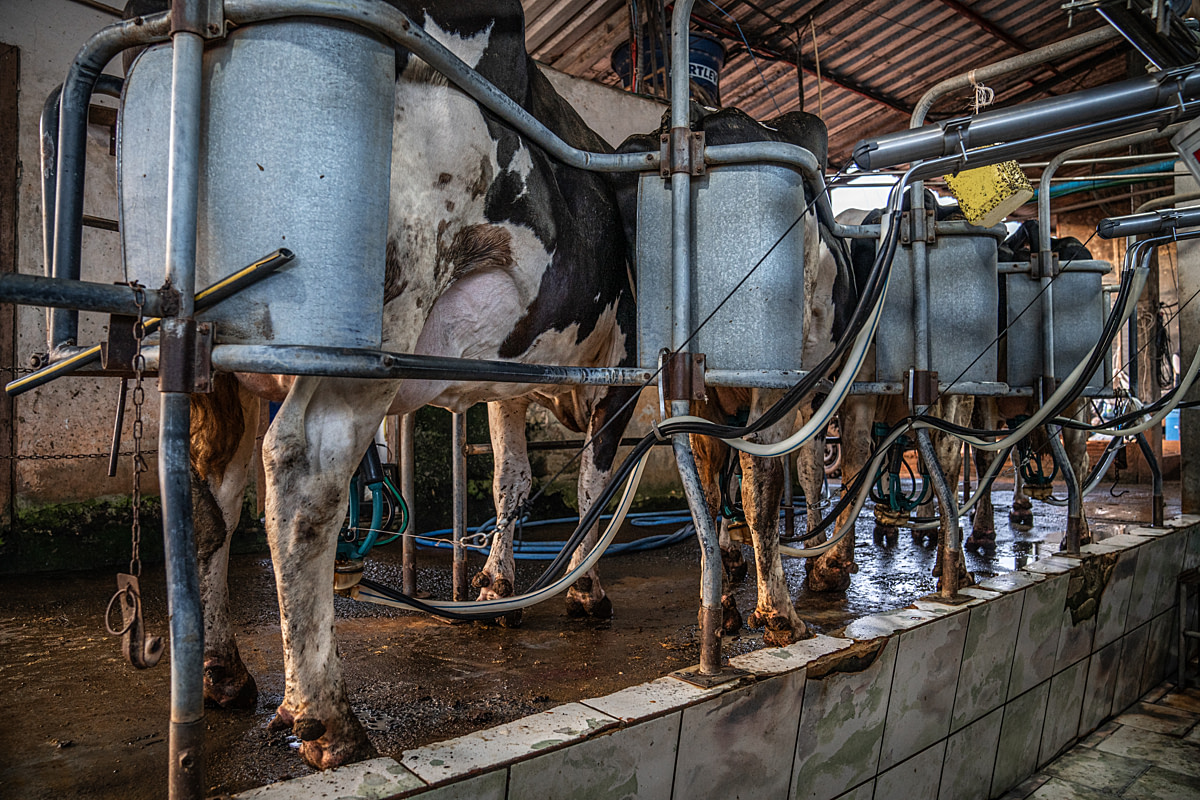
Cows are milked inside a milking parlour at a dairy farm. Feces and dirt coat the cows’ legs and floor. Undisclosed location, Santa Catarina, Brazil, 2024.
Vincenzo Ricci / World Animal Protection / We Animals
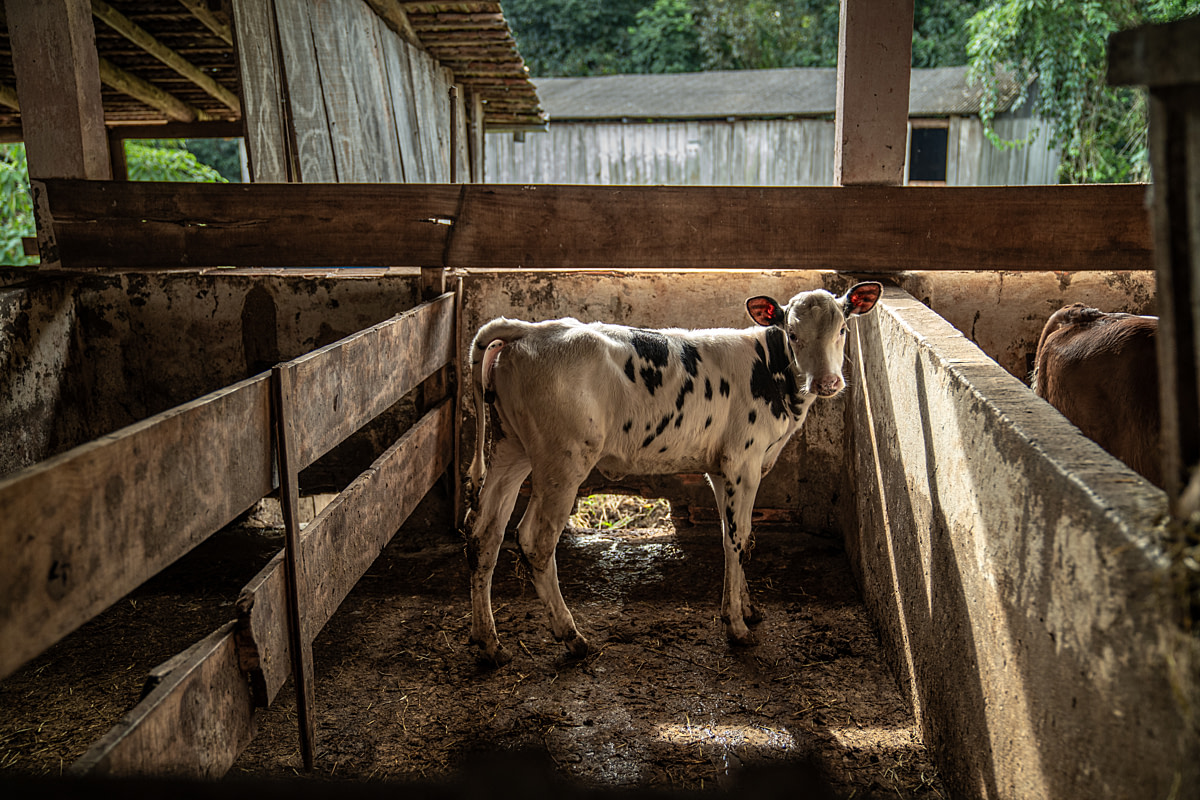
A female dairy calf makes eye contact while she stands inside a dirty calf shed stall at a dairy farm. Undisclosed location, Santa Catarina, Brazil, 2024.
Vincenzo Ricci / World Animal Protection / We Animals

A sick dairy cow lies in an enclosure thick with accumulated feces and muck at a dairy farm, her body covered in filth. Undisclosed location, Santa Catarina, Brazil, 2024.
Vincenzo Ricci / World Animal Protection / We Animals
The reality is that small and medium farms like these feed into large cooperatives and multinational meatpackers. Together, they power the country’s giant export machine, yet our work shows that many operate without basic biosecurity or welfare standards.
The industry’s own data also highlight the disconnect. While export volumes set records, independent audits find that animal welfare commitments from retailers and processors remain largely unfulfilled. The scale of the industry outpaces its regulation.
Piglets newly delivered to a pig fattening farm fill a barn a corridor as a worker herds them into small pens. The region’s pig farms are allegedly among the primary suppliers of pigs to several large corporate meat entities. Undisclosed location, Santa Catarina, Brazil, 2024.
Vincenzo Ricci / World Animal Protection / We Animals
COP30 in Brazil
The focus on that imbalance is currently going global. With COP30 happening in Belém, agriculture is at the heart of the climate agenda, and Brazil’s meat lobby is front and centre. The country’s largest beef and pork companies are fixtures at UN climate summits, promoting what they call “sustainable tropical agriculture.” Critics call it greenwashing: sustainability rhetoric that stops short of addressing methane, deforestation, antibiotic use, and animal suffering.
What we documented on Brazil’s livestock farms matters as much for climate as it does for ethics. Poor hygiene and overcrowding drive disease risk and antibiotic use. Open manure lagoons release methane. And as highlighted in these compelling photographs by Victor Moriyama, animal agriculture, particularly cattle ranching, is a significant contributor to deforestation in Brazil.
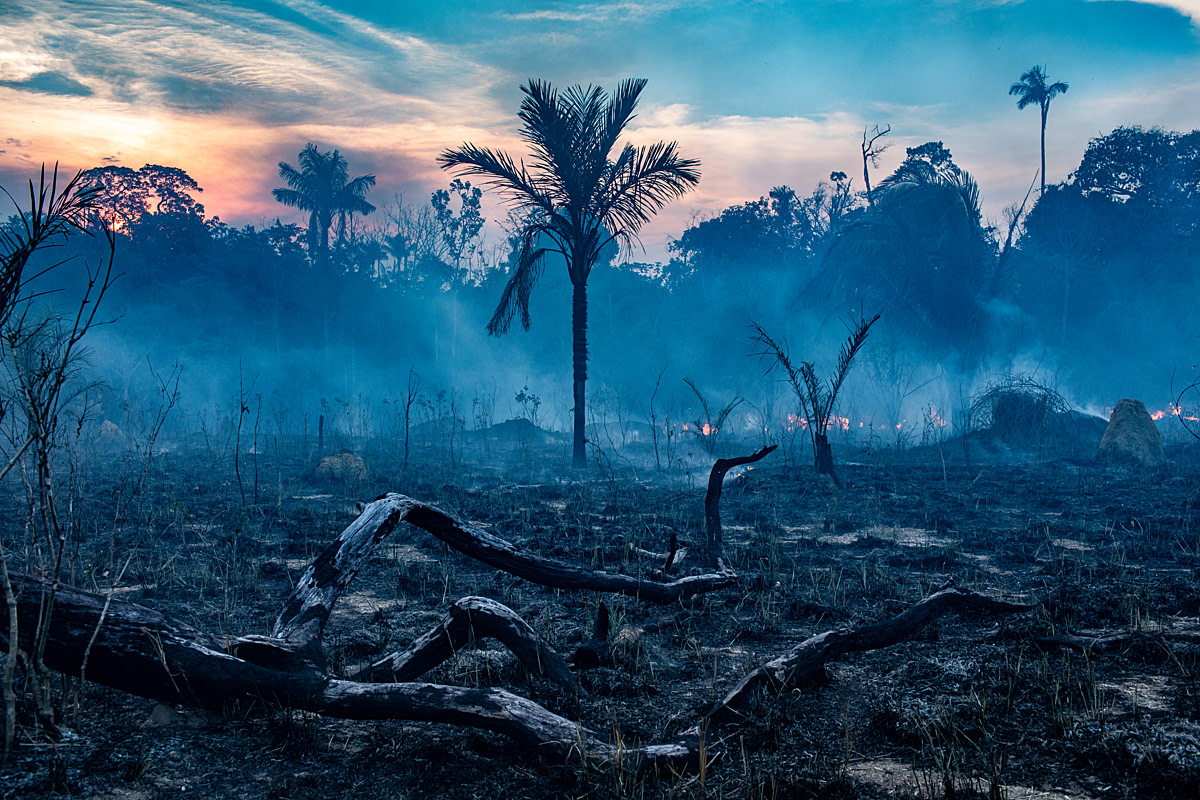
A burning pasture at a cattle farm also burns a neighboring forest area. Farmers from the Amazon region have historically set fire to their pastures to clear the area before the grass sprouts. Brazil’s National Institute for Space Research reported a more than 80% increase in fires in the Amazon rainforest from January through August 2019 compared to the same period in 2018. Undisclosed location, Mato Grosso, Brazil, 2019.
Victor Moriyama / We Animals

Vaqueiros (cowboys) round up cattle for loading onto transport trucks at a farm located within a protected reserve. Farms in protected areas are illegal but there is little oversight by the Brazilian government. Undisclosed location, Rondonia, Brazil, 2021.
Victor Moriyama / We Animals
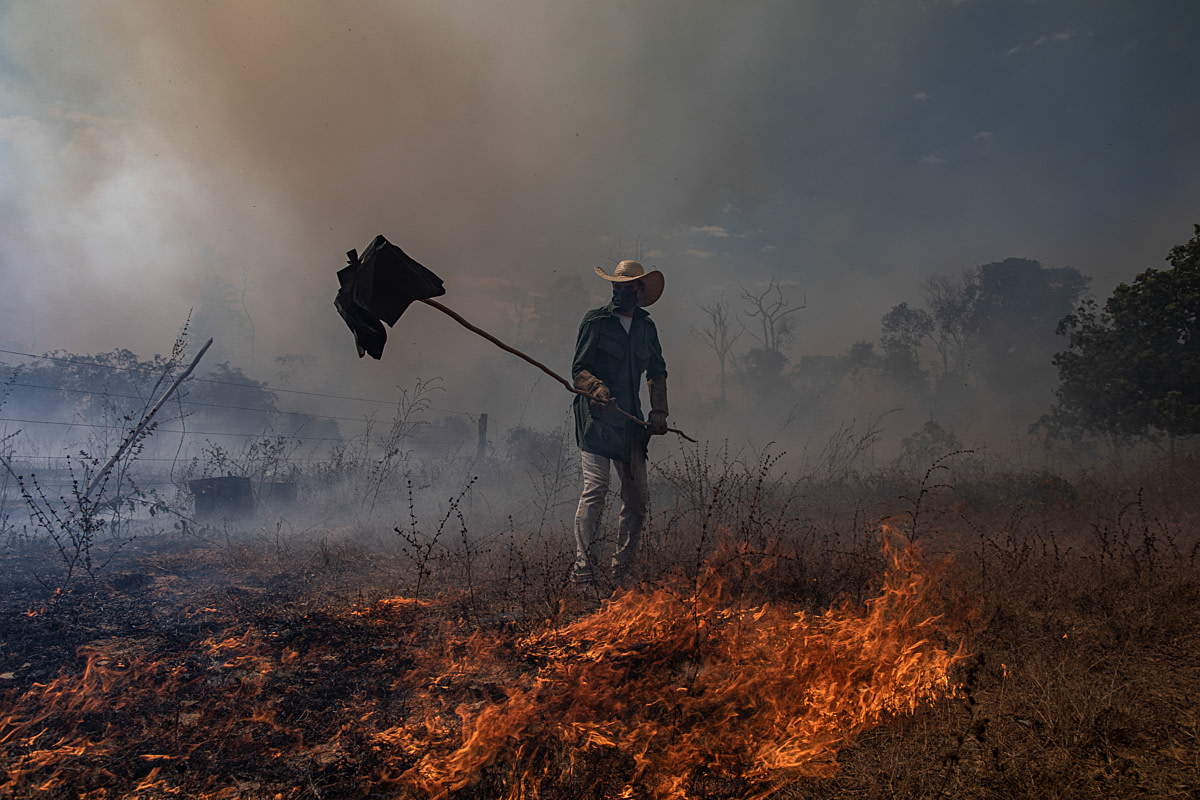
A local resident tries to put out an illegal fire burning in an environmental reserve in the Amazon rainforest. This image was captured as part of an expedition by the Rainforest Foundation to monitor the relationship between soy production in Brazil and its relationship with the deforestation of the Cerrado and Amazonia biomes. Undisclosed location, Mato Grosso, Brazil, 2020.
Victor Moriyama / We Animals
True Climate Credibility Starts at the Barn.
As the world focuses on Belém for COP30, the challenge for Brazil—and for every nation buying its meat—is to close the gap between what is promised and what is lived. If Brazil wants to be seen as a climate leader, the proof will not come from slogans but from real change within the livestock industry.
Until that happens, export growth will continue to outpace progress on animal welfare and environmental oversight. Our work strives to keep industry data and the lived reality for animals and the planet in the same frame.
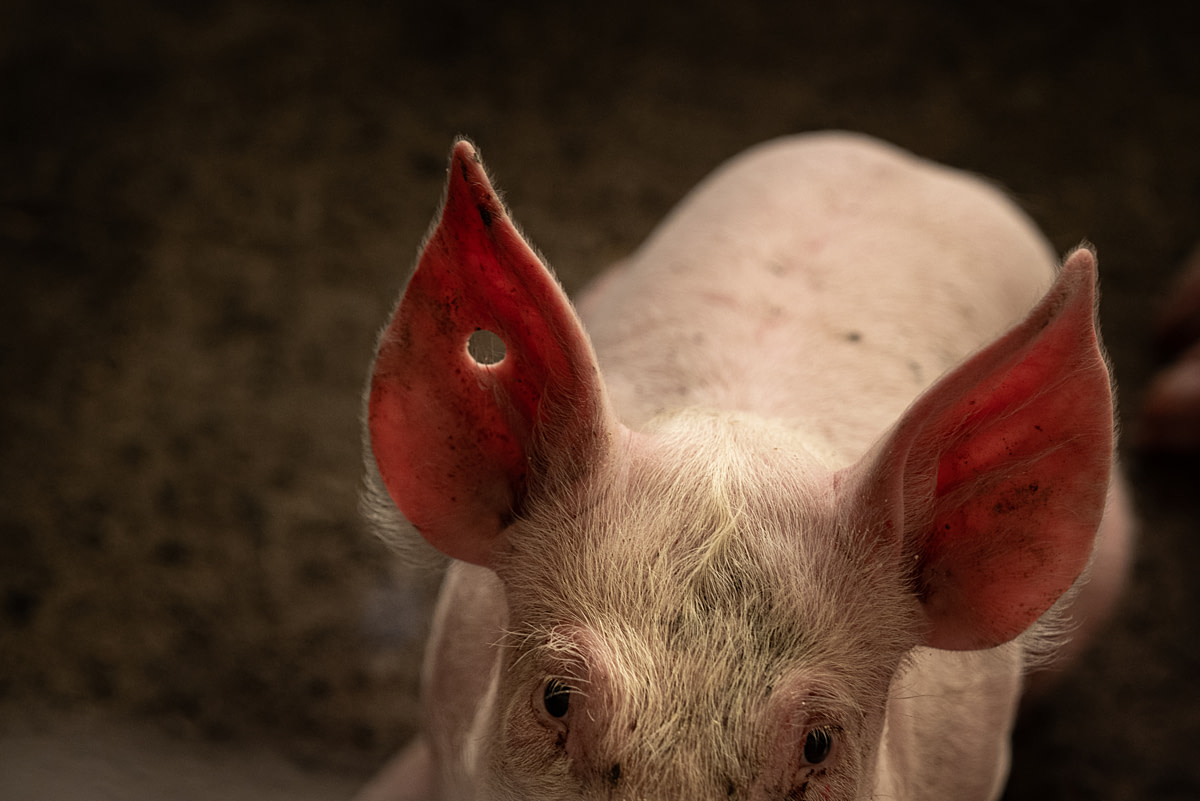
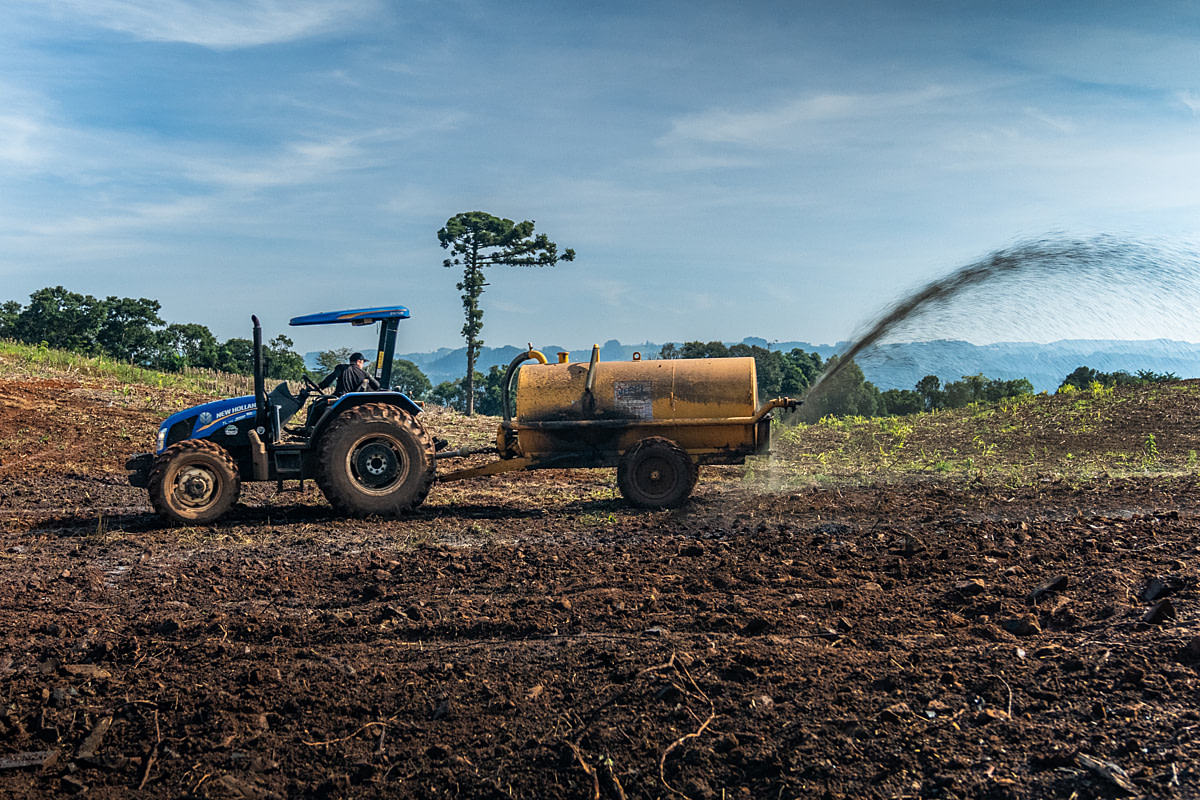
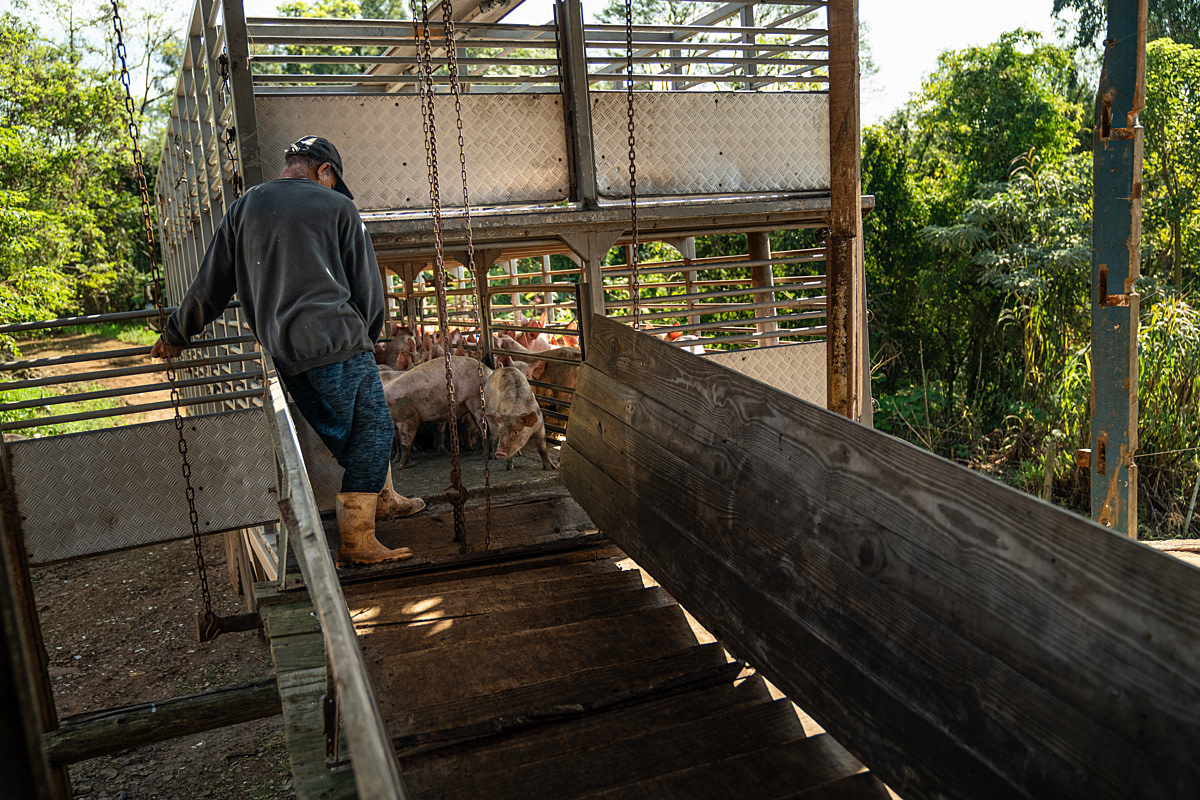


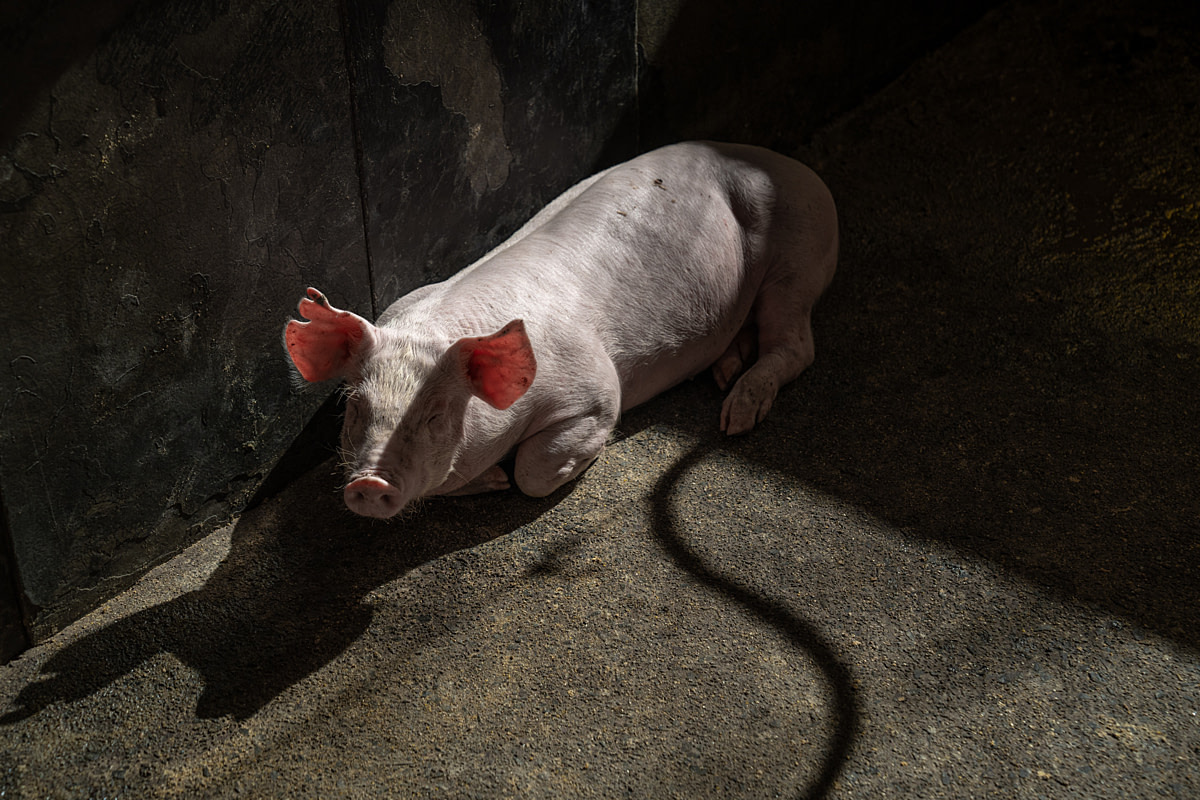
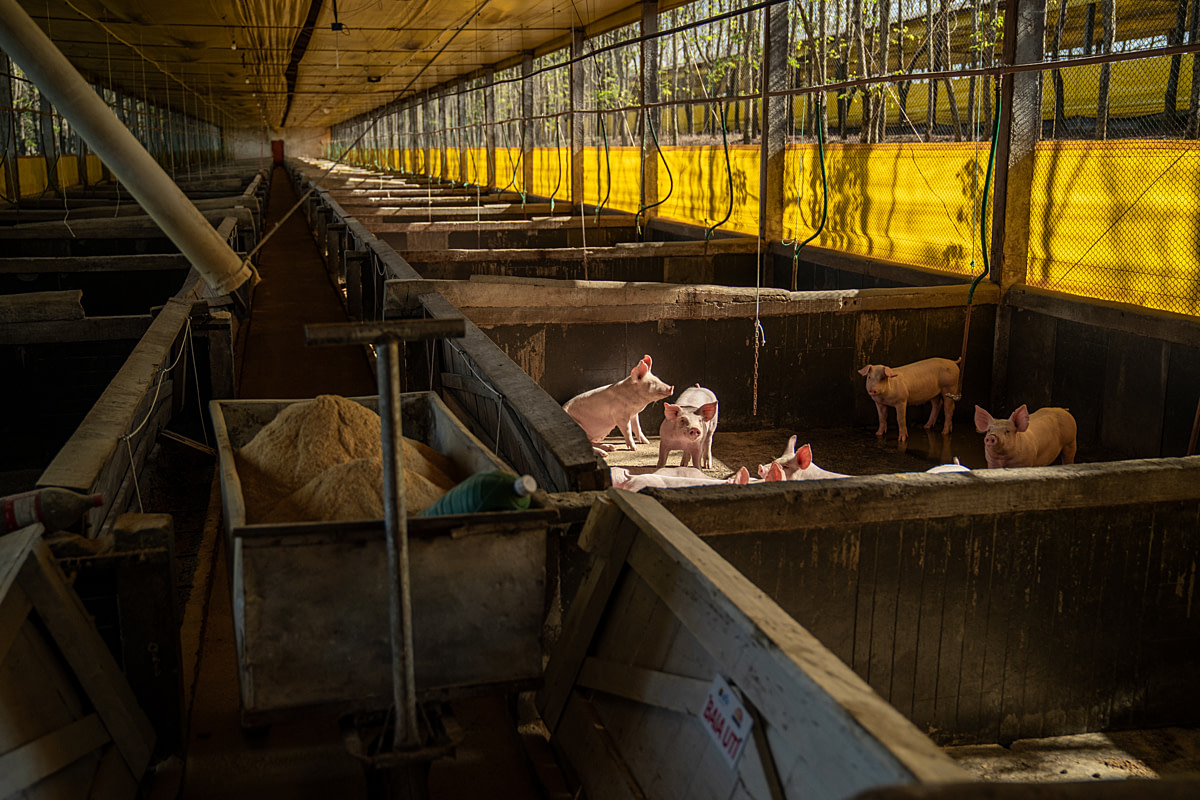


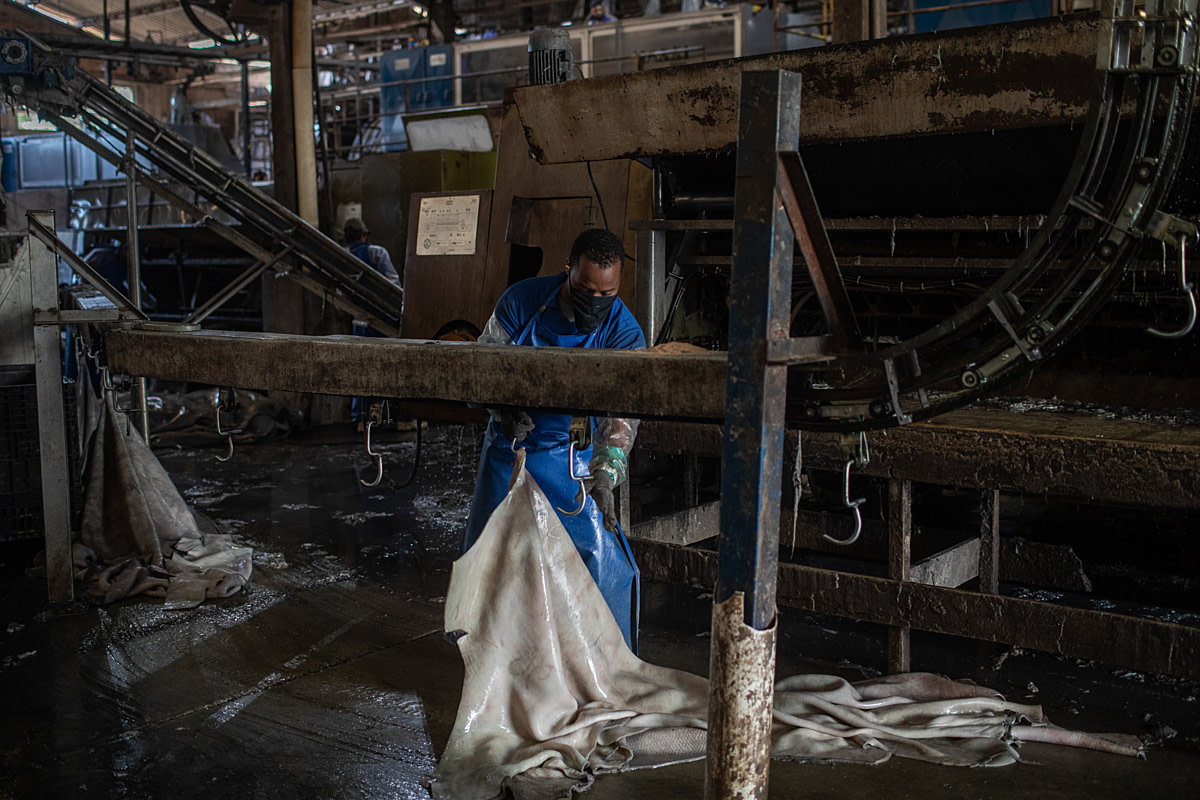

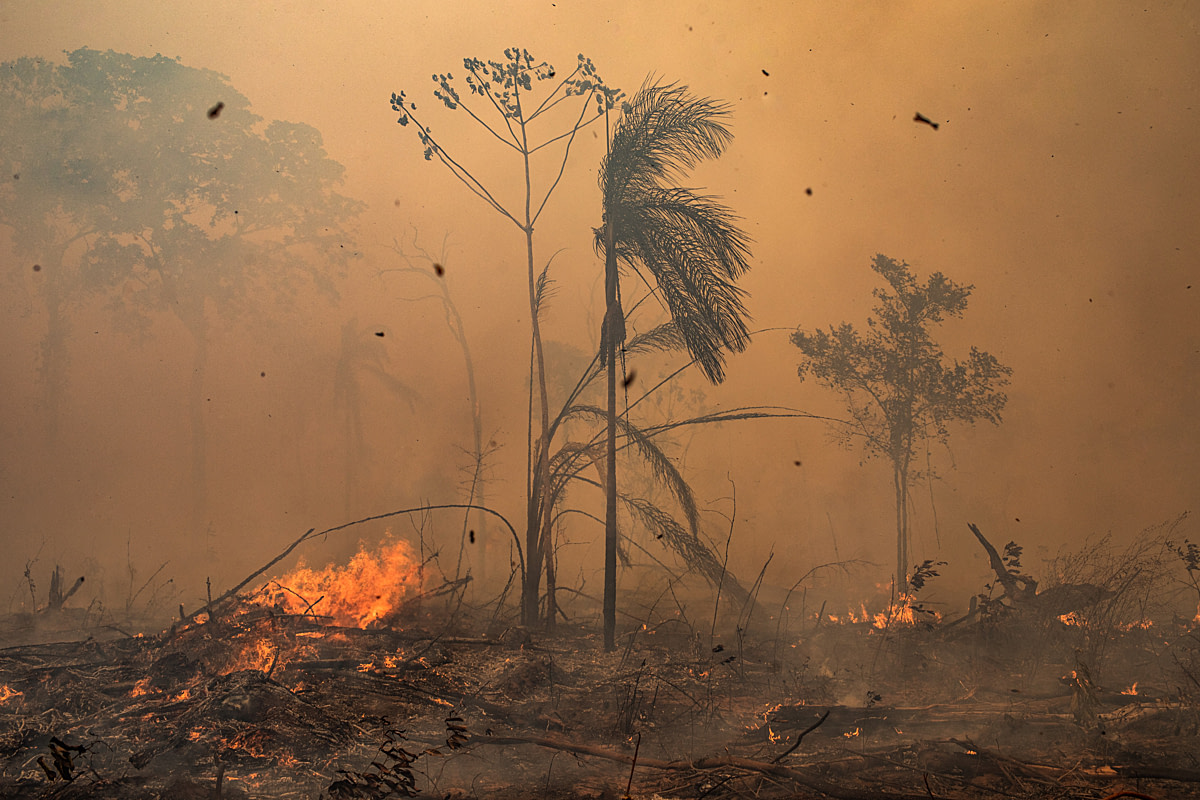
Explore and download these visuals and more via the We Animals Stock Site.

